And now I complete the review started here of a set of reptiles and amphibians from weird toy maker COG Ltd. As seen before, it is a set of very small herptiles (I will revive that term!) composed of 9 reptiles and 7 amphibians. Part one was 1 crocodilian, 5 lizards, and 3 snakes. This set features 7 amphibians–4 newts/salamanders and 3 caecilians! Unless there are more somewhere, I think that this set may actually contain more caecilian figures than any other toy set…and may be the only toys period. As with the reptiles…sometimes the identification is not exactly spot on or easy. This is especially true of the salamanders, which overall have decent sculpts, but the paint jobs…meh. The caecilians, on the other hand, stand out more (one in particular).
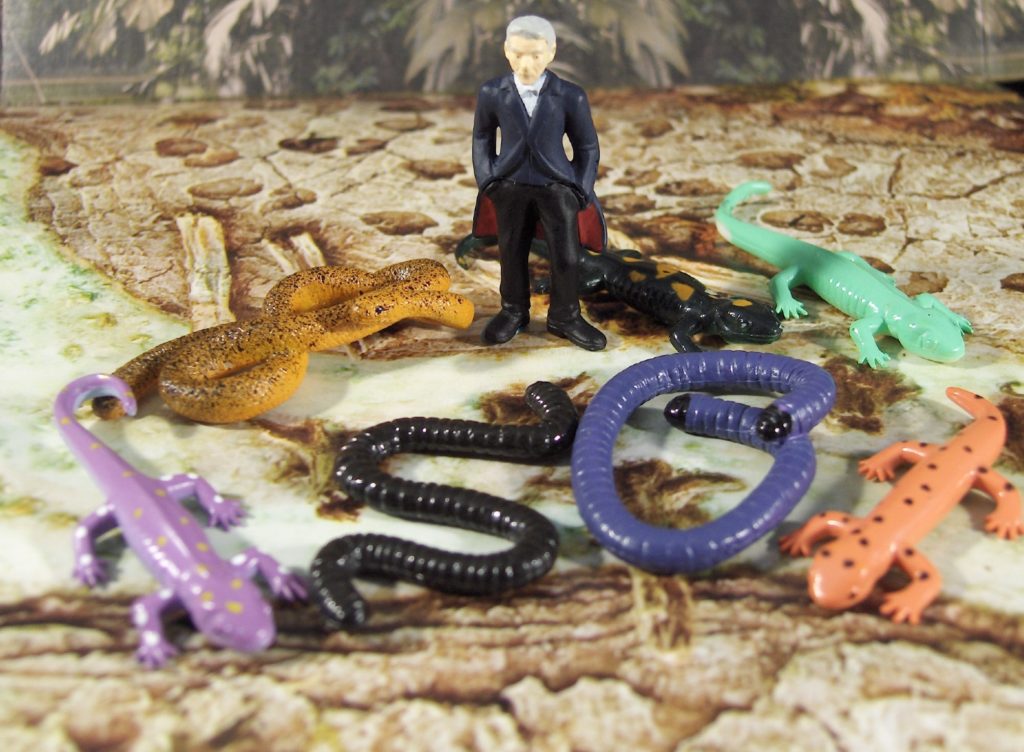
Purple salamander Gyrinophilus porphyriticus (Green, 1827)
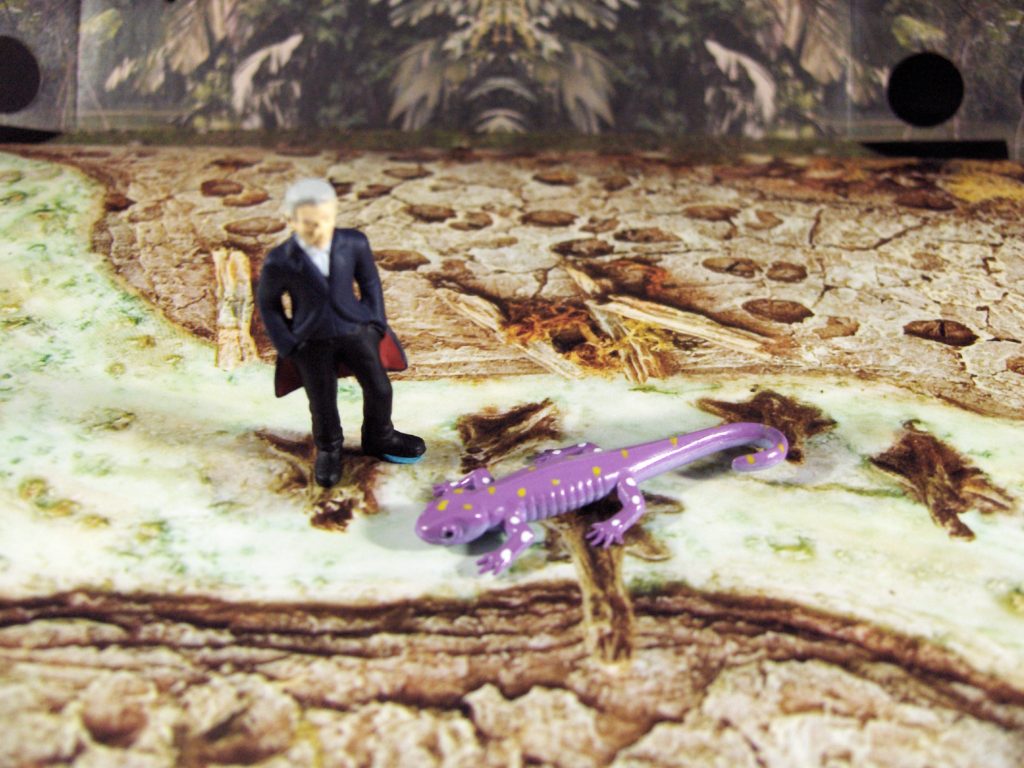
I have labelled this one a purple salamander (the species) AKA spring salamander. If for no other reason than it is very, very purple (from what I can find, purple salamanders are actually less obviously purple…). And the species (like many) does have small yellow or white spots, like this figure. But the sculpt is pretty decent for a set like this. They even took the time to sculpt in the little folds along the sides and, for those who might notice such things, the cloaca is raised and sculpted at the base of the tail! Moreover, they got the toes right for the average plethodontid salamander–4 on the front, five on the back. It’s a good start for the amphibians.
Spotted salamander Ambystoma maculatum (Shaw, 1802)
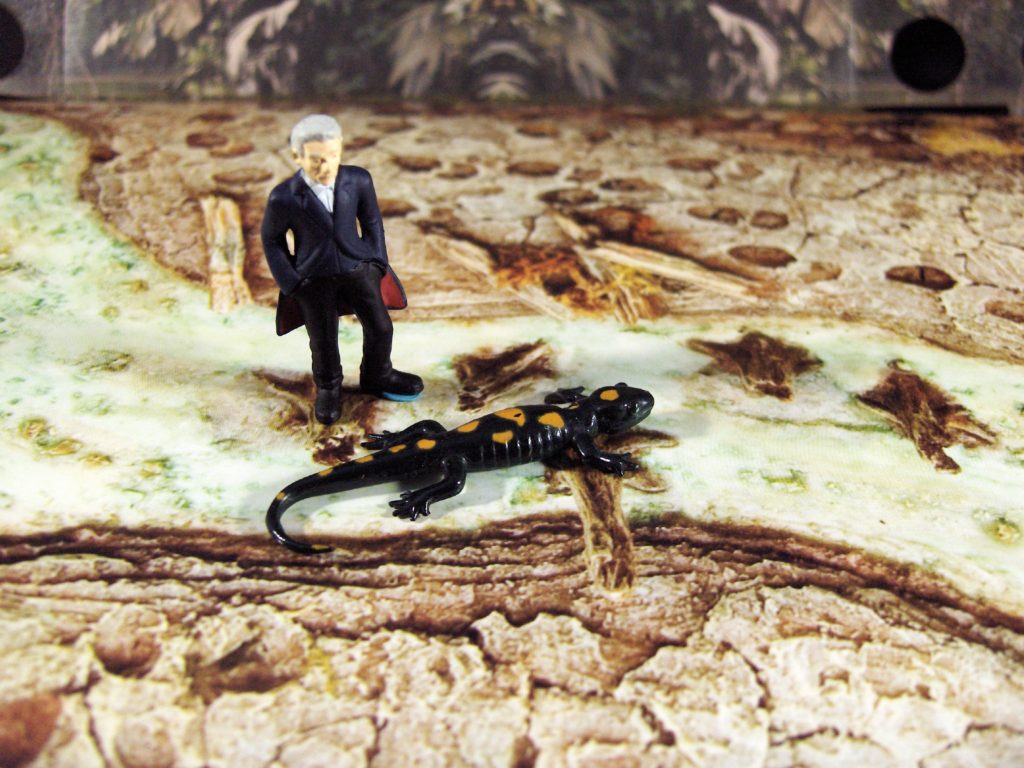
I went with spotted salamander, but this could as easily represent any number of Ambystoma. Or maybe it’s a Fire salamander Salamandra salamandra (my only reservation is the lightly built body). These figures are painted so roughly, it can be a tough call; and of course a lot of these animals in the real world have quite variable patterning as well. Really, it can be what you need it to be…! Like the purple salamander, the sculpt is very good and it would be great if the moulds were discovered and used by someone that was willing to put in the paint job to match. This one also has the folds, the correct toe numbers, and the cloaca bulge. Someone did their homework with these when it came to design.
Green Salamander Aneides aeneus (Cope & Packard, 1881)
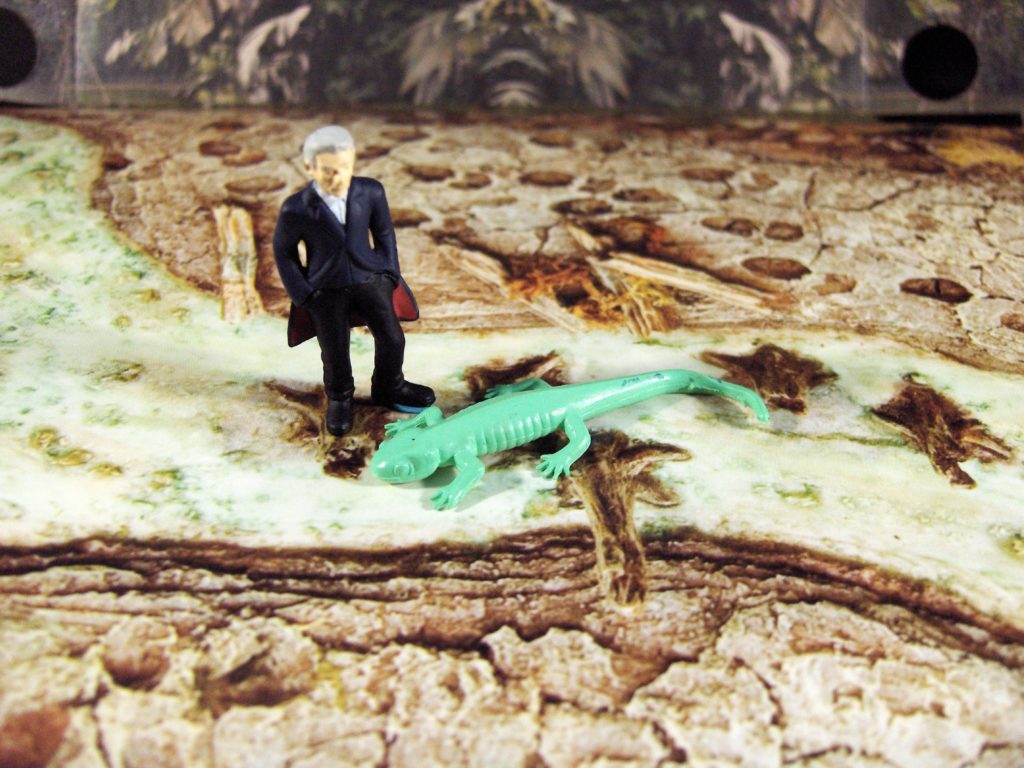
Next we have what is likely the same sculpt as the purple salamander, but it is very green. In keeping with convention…green salamander seems appropriate. Even though the green should be more of a mottling along the back, with darker base colour. This is actually the least impressive of the figures in the whole set–they didn’t even paint the eyes. Almost like they did 15 of them, realized they missed one, and quickly churned out a copy. Not much else to say about it though. Perhaps one, thing, that there is a ridge along the spine up to the base of the tail, which I don’t think is as visible in the photo of the purple salamander; this also differentiates it from the sculpt of the spotted salamander. It is roughly the same length as the purple salamander, but green salamanders are shorter, so it comes in at 1:2 scale.
Red Salamander Pseudotriton ruber (Latreille, 1801)
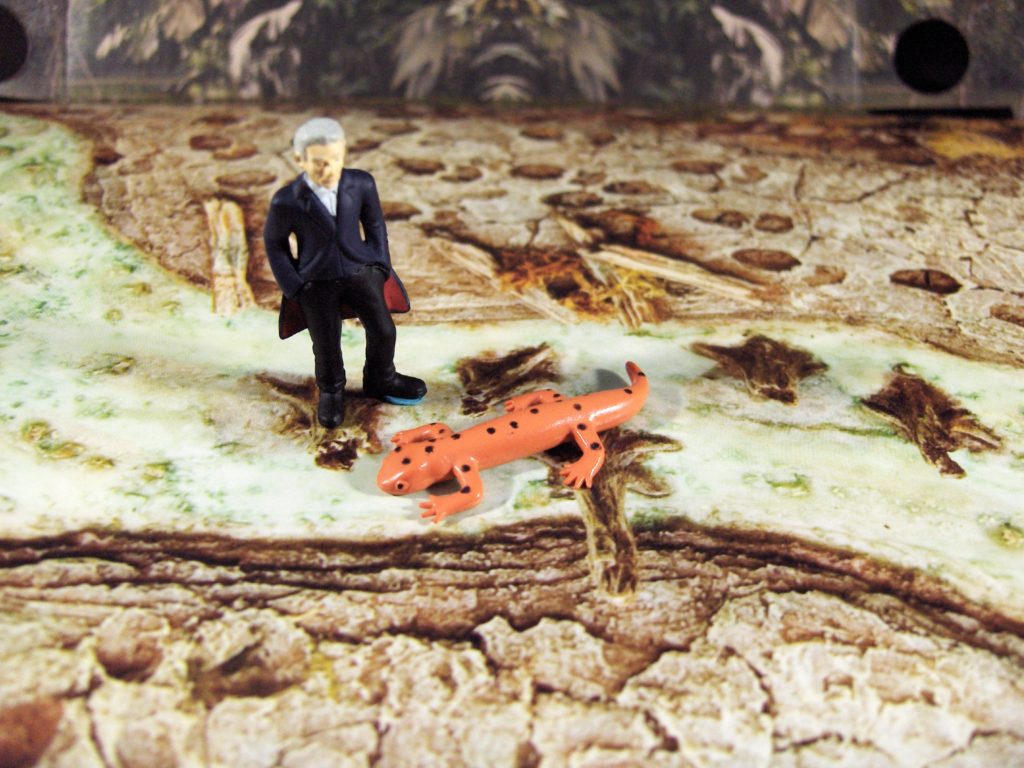
Okay, not sorry.
This one is likely meant to be the red salamander. For once, it follows at least the real pattern of the animal–overall red, with black spots. At least in spirit. Like the green salamander, it’s like they got bored or something–there should be a lot more spotting. And it’s not like they couldn’t do great paint jobs–the chameleon and thorny devil demonstrated that. This, though, is another unique sculpt, with a few different elements from the others. There are no ridges along the sides, that seems to be in keeping with any photos I’ve seen of red salamanders. The toes are correct, and once again the cloaca is part of the sculpt. The only odd thing is the tail. It is very short, with a very thick base and then a quick taper. If we’re forgiving, maybe they were representing a salamander that was regrowing a lost tail. I am not that forgiving, it’s probably a sculpt choice. This is the shortest figure in the set, at only 4.5cm, which gives a scale of 1:4.
Gaboon caecilian Geotrypetes seraphin (Dumeril, 1859)
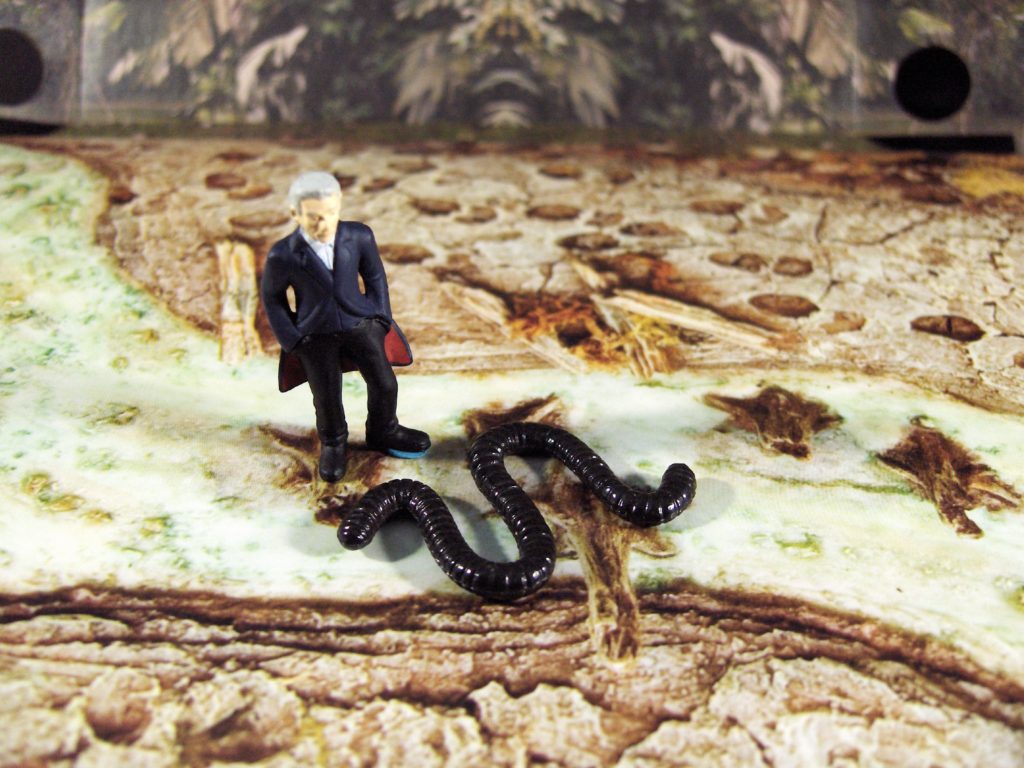
So here we are. Some strange attempts at some very strange amphibians. This one is pretty generic. As with the next one, they kind of cheated a bit. They took advantage of the annulations and then stopped. It doesn’t help that many of the caecilians are eyeless and kind of worm-like anyway. In this case, they went with a dark brown species, although one side has some lighter brown in it. From what I can tell, that is because the paint is the darker colour, and it didn’t get all the way to the underside. Not much else to say about it–it’s kind of curvy, and to really be a Gaboon caecilian there should be some white or grey in the annulations. Still, odd animal to make (and wouldn’t be surprised if they used it as a worm in a different set). These are all relatively long figures for the set; this one is 11cm, giving a scale of 1:4 or so.
Purple caecilian Gymnopis multiplicata Peters, 1874
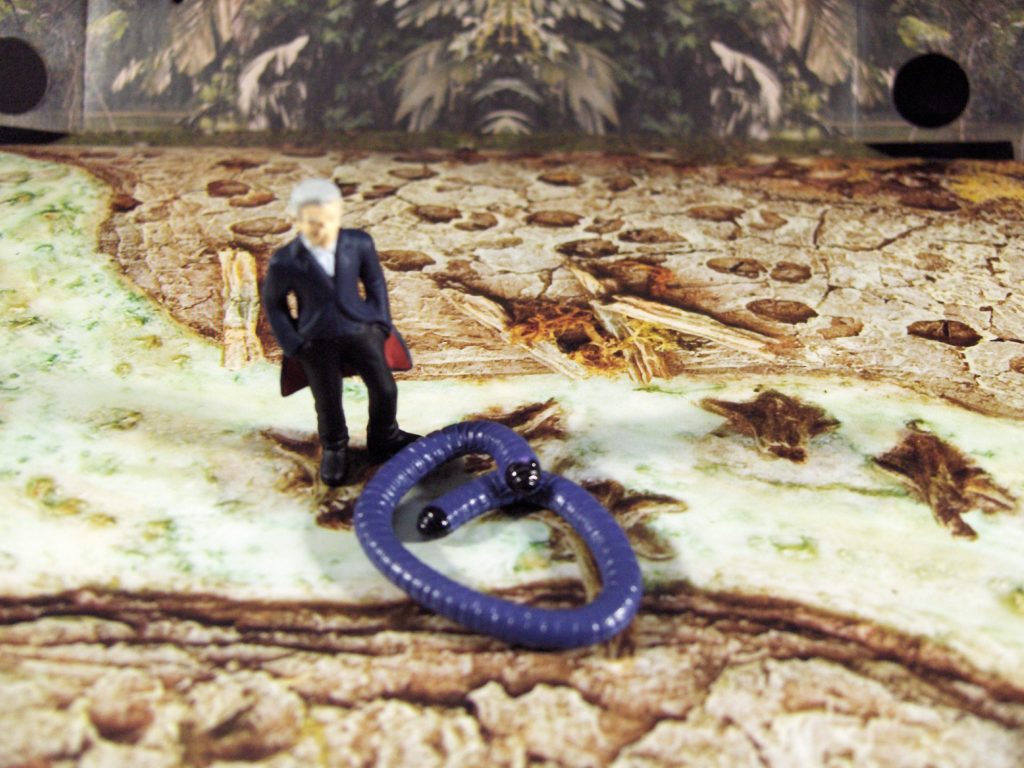
Again, an animal that, given the set, should be a caecilian. The anullations are very much their thing. As for species, I went with purple caecilian for obvious reasons, although the head should taper more. And of course, the purple should be more subtle. As with the Gaboon, it’s hard to say much more, other than once again we have a really odd choice of animal in the bucket. This one is also about 11cm long, which gives us a scale of about 1:3.
Two-Lined Caecilian Rhinatrema bivittata (Guérin-Méneville, 1829)
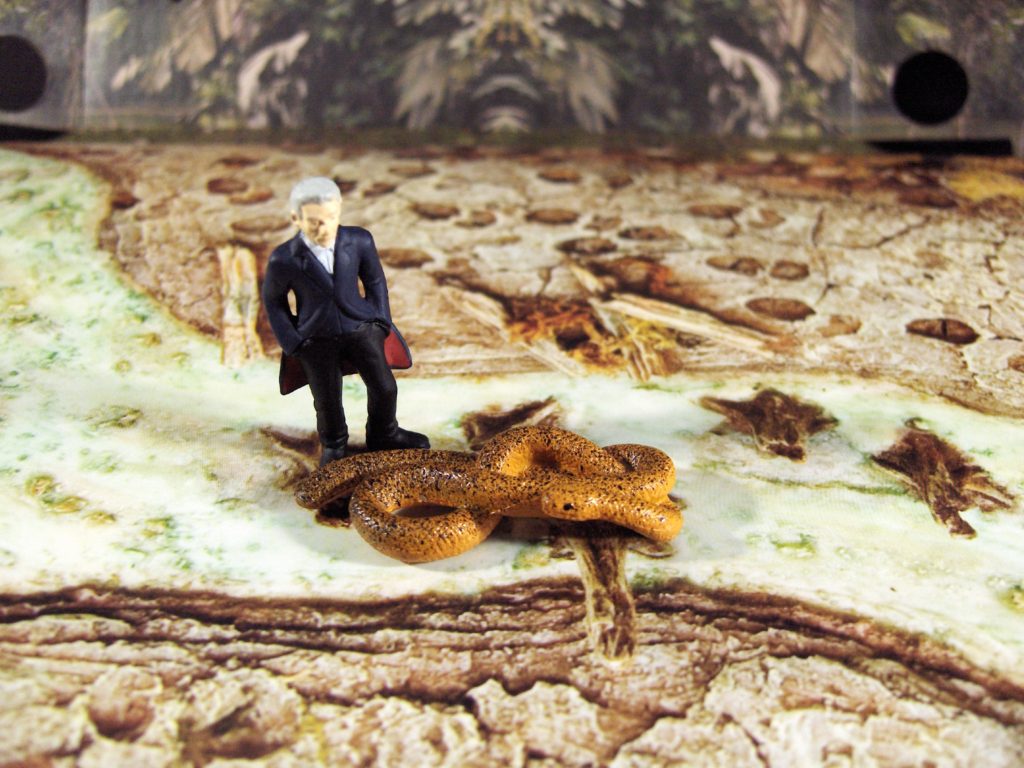
And now we come to this–a figure that would likely be described as the must-have from the set for any herptile collector. Back when I first got this set I assigned identifications; I had no idea for most of them. For these posts, I went back to confirm my IDs as well as gather more info. As I was reviewing the caecilian figures that I was sure of, I came across some photos of a species that was tan or dark ochre in colour, with a smattering of dark spots all across the back (some are more patchy, others are much darker). The face was rounded and blunt, but there was a visible dark eye and a clear, straight mouth. It hit me that this figure, which back then I assumed was a snake, was probably the best-detailed amphibian in the whole set–proving, again, that whoever painted the COG herptiles could do a great job if they wanted to. After the lame attempts on…every other amphibian…this one shows a lot of attention. And it is by far the most dynamic sculpt, with several twists in the body. That body is roughly 11 cm long, same as the other caecilians, but given that the Two-lined caecilian is only about 18cm long, it roughly 1:1.6 scale. There are some misses…like the belly being unpainted. And the skin texture is a little rough. But it’s just so odd that it exists at all, and it is hard to mistake for a different animal (but I always hold out that I could be wrong there).
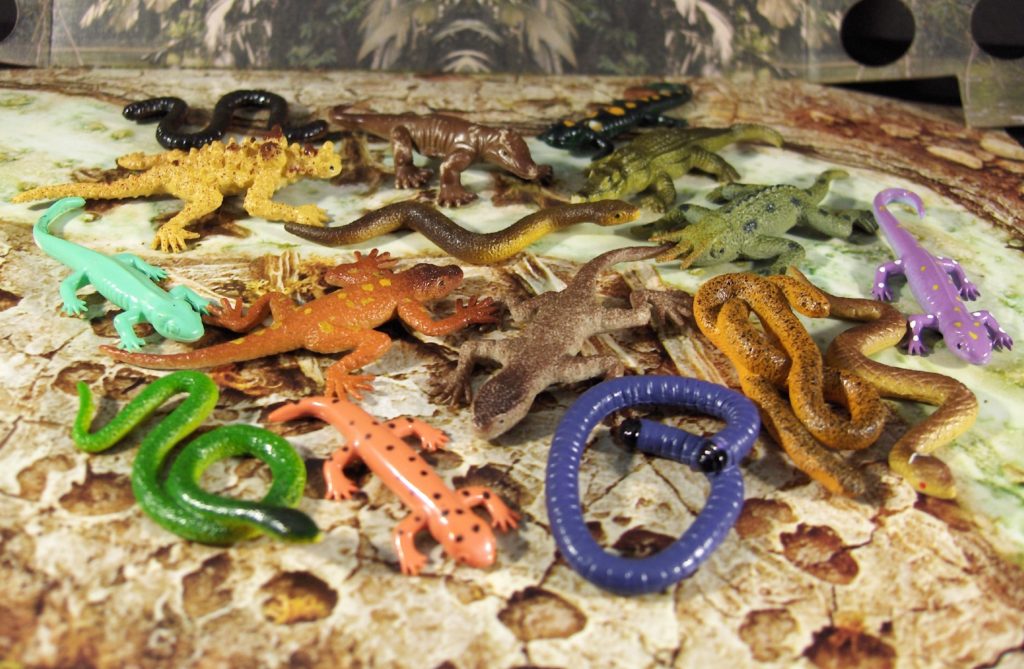
So, final thoughts? Overall, it’s an okay set. Some are definitely better than others…and none are what you would call ‘museum-quality’. They generally might qualify around the level of early-years K&M International tube figures. But there are some neat ones in there…assuming that I was able to ID them. As I said last time, anyone with other identifications suggestions can let me know. Even better if someone else has copies to compare! Honestly, I bought these about 13 years ago; if I had known, I might have picked up a few sets. With a little paint, and maybe a bit of light reconstruction, these figures could really pop. If nothing else, they could certainly fill out undergrowth or backgrounds for scenes and dioramas. So keep an eye out, maybe the set is still out there in some form (I have yet to find it though…)
Disclaimer: links to Ebay and Amazon on the AnimalToyBlog are affiliate links, so we make a small commission if you use them. Thanks for supporting us!



